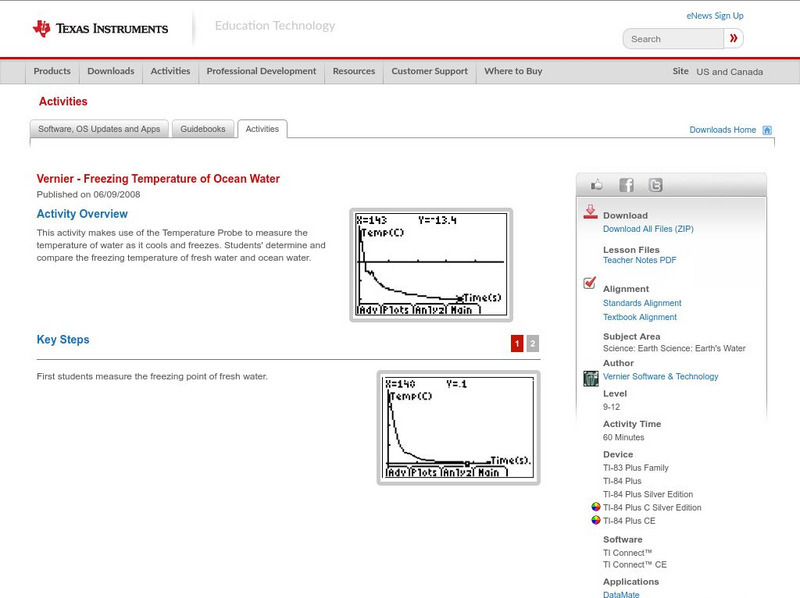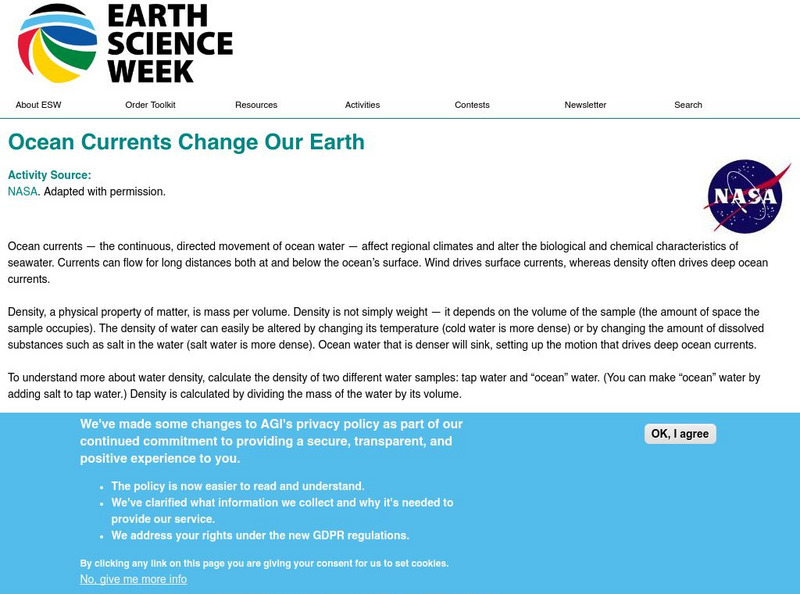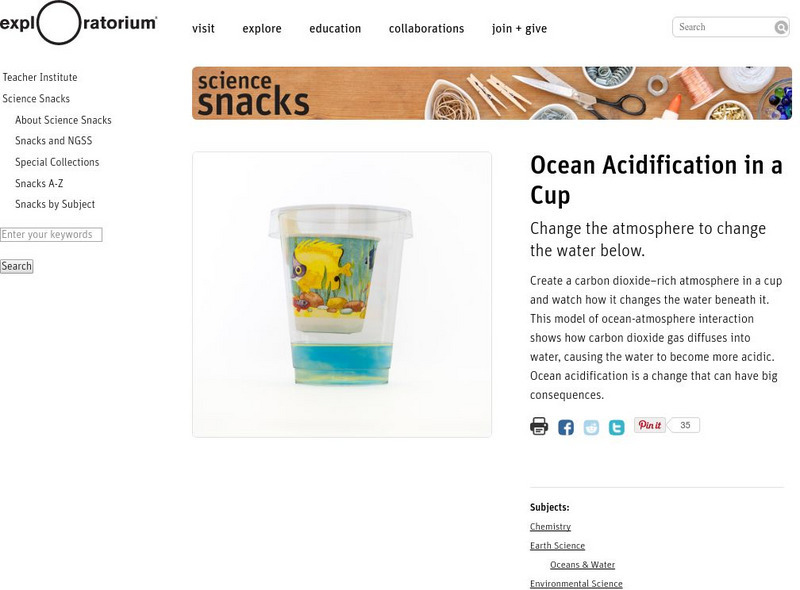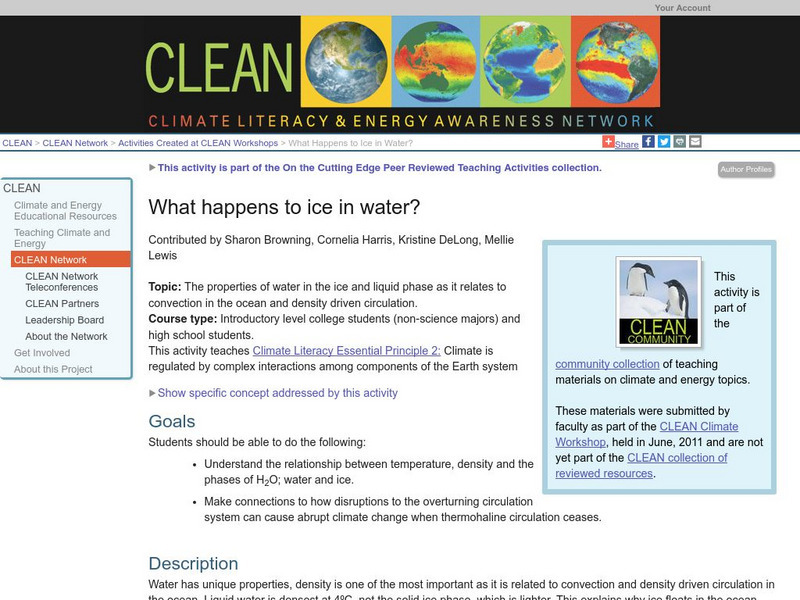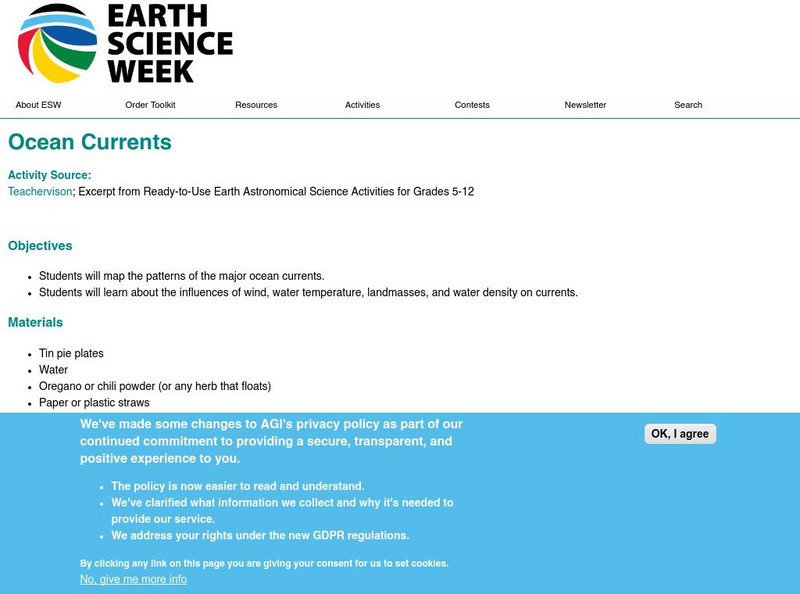Curated OER
Shark Attack
Students examine the white shark. They think critically about a set of shark facts and predict whether the statements are true or false. Students describe a year in the life of a white shark living in the Red Triangle. They create a...
Curated OER
Ocean Animals vs. Humans
Young scholars use critical thinking skills to solve word problems using ratios that allow them to compare humans to ocean animals.
Curated OER
And Now for Something Completely Different...
Students identify organisms that are typical a part of a hydrothermal vent. They examine why hydrothermal vents are short-lived.
Curated OER
Where Did They Come From?
Students explain hydrothermal vents and the process in which species and the hydrothermal vents become isolated.
Curated OER
Tracking the Storm
Learners discuss the different types of storms that can hit land. They locate specific coordinates on a plane grid. They discuss lonsgitude and latitude to plot the coordinates of a tropical storm. They practice finding coordinates...
Curated OER
Air Pollution Over Where?
Students predict the movement of an air borne pollutant using their understanding of air currents. They determine which governments and/or communities should be contacted to be forewarned. They also explore the properties of their...
Curated OER
What Is A Dinosaur?
Young scholars use the question of "What is a dinosaur?" in order to establish the context for a class investigation. They use a variety of resources in order to gather information. Students compare and contrast the similarities or...
Curated OER
Life on the Border
High schoolers discuss different types of boundaries. They research the United States/Mexico border and answer questions about their findings. They create collages, posters, or multimedia presentations showcasing various areas of concern...
Curated OER
Telegraphy
Young scholars research the telegraph. In this telegraph lesson plan, students review the history of the telegraph. Young scholars complete radio wave experiments. Students work in pairs to complete 3 sound exercises.
Science Education Resource Center at Carleton College
Serc: Ocean Water: Density
In this lesson students will learn about the stratification of the ocean by using a simulation to show the different densities. The simulation explores how temperature, salinity, and wind affect the development of water stratification.
Texas Instruments
Texas Instruments: Freezing Temperature of Ocean Water
This activity makes use of the Temperature Probe to measure the temperature of water as it cools and freezes. Students' determine and compare the freezing temperature of fresh water and ocean water.
TeachEngineering
Teach Engineering: One World Ocean
In this activity, students learn about ocean currents and the difference between salt and fresh water. They use colored ice cubes to see how cold and warm water mix and how this mixing causes currents. Also, students learn how surface...
National Geographic
National Geographic: Mapping Ocean Currents
An unfortunate spill of 92,000 rubber ducks into the ocean in 1992 elicited invaluable information about global ocean currents as scientists tracked their journeys around the world. In this lesson, students first learn about the Ocean...
Other
Project Wet: Discover Water
Interactive opportunities which emphasize the impact water has on our lives. Explore watersheds, ocean water, fresh water sources, and ways to use water responsibly by engaging in activities, coloring pages, and short quizzes.
University of Southern California
Usc: The Composition of Ocean Water
This site gives background information to ocean water and its contents. It has a link to an detailed chart showing the minerals and their content amount in ocean water. It also has links to activities.
The Franklin Institute
Treasures@sea: Exploring the Ocean Through Literature
This extensive resource consists of learning activities that integrate language arts with oceanography. Each activity is based on one of seven books about the ocean and are written to be adaptable. Includes writing activities, games and...
Utah State Office of Education
Utah State Office of Education: Water's Importance to Life on Earth
A variety of activities to help students explore the relationship of water to life on Earth. Provides an opportunity to see how ocean levels have changed over time and what effect that can have on living things.
American Geosciences Institute
American Geosciences Institute: Earth Science Week: Ocean Currents Change Our Earth
Students learn about the factors that drive ocean currents by measuring the density of ocean water and tap water.
Exploratorium
Exploratorium: Science Snacks: Ocean Acidification in a Cup
In this activity, you can observe how ocean acidification can have big consequences. This activity has students creating a cup that has a carbon dioxide-rich atmosphere that allows them to watch how the water changes beneath the atmosphere.
Climate Literacy
Clean: What Happens to Ice in Water?
Students investigate the properties of water in the ice and liquid phase as it relates to convection in the ocean and density driven circulation, and ultimately the climate.
American Geosciences Institute
American Geosciences Institute: Earth Science Week: Ocean Currents
Students map the patterns of the major ocean currents, and learn about the influences of wind, water temperature, landmasses, and water density on currents.
Other
Bigelow Laboratory for Ocean Sciences: Salinity and Deep Ocean Currents
For this activity, students will investigate how temperature and currents affect the salinity of ocean water, making predictions after studying ocean maps. It is recommended that teachers do the experiment themselves before presenting it...
Annenberg Foundation
Annenberg Learner: Bridging World History: Connections Across Water
Global exportation and importation increased when water routes opened up. This unit analyzes how this affected world trade as well as the spread of population, religion, and illness.
Other
Ocean Park Hong Kong
This site offers a description of this seaworld-like park. It is a very colorful and informative site with a lot of information about the park. Follow the 'Education' link at the bottom to access the section with learning activities.










